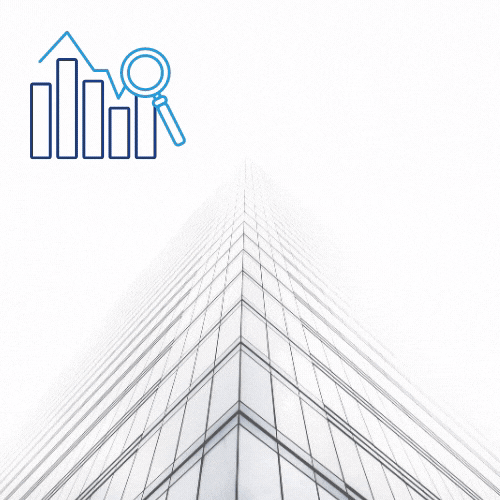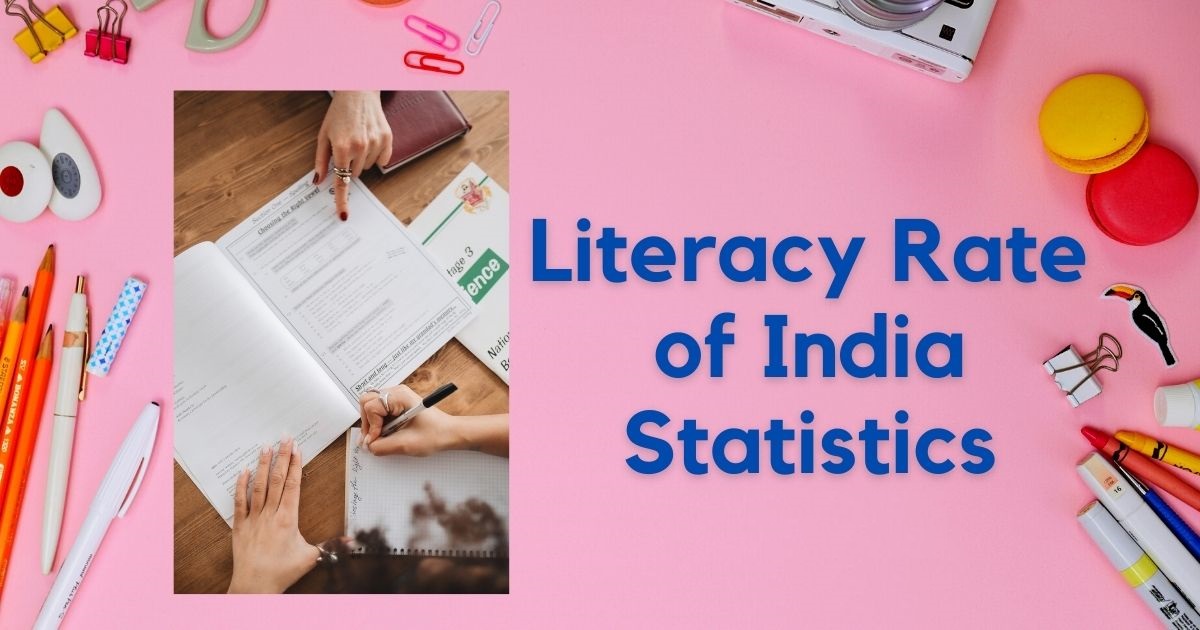A literate person is a vital asset to the nation’s development. A high literacy rate is important to ensure that people are trained in complex communication and critical thinking skills necessary to thrive in the workplace and a global economy.
India’s literacy rate has been rising in recent years, but the country still has a long way to go before its population truly becomes literate. The national average of people who can read, write and communicate has more than doubled since 2001. However, literacy rates vary greatly between different areas of the country.
Why does India’s literacy rate matter? It matters because literacy is the foundation of opportunity and development. When you can read and write, you can have access to information and ideas that will help you improve your standard of living and enable you to better care for your family and yourself. The literacy rate in India is one of the major factors for socio-economic progress in addition to academic achievement.
India’s literacy rate has increased dramatically over the past four decades. According to the report published by the National Survey of India, the Literacy Rate of India in 2023 is 77.7 per cent. The literacy rate in 2011 was 73%. There is an increase of 4% compared to the last census data. That’s pretty impressive compared to other developing countries, but it still means that nearly one in four Indians remains unable to read or write (compared to about one in eight people worldwide). Kerala is the Most literate state in India. The literacy rate of Kerala is 96.2%. As per UNESCO, India will achieve Universal Literacy in the year 2060.
On 8 September, International Literacy Day is celebrated around the world every year. The global literacy rate is estimated to be 86.5 per cent by UNESCO.
| Literacy Rate of India in 2023 | 77.7% |
| Male literacy rate of India in 2023 | 84.7% |
| Female literacy rate of India in 2023 | 70.3% |
The male literacy rate of India in 2023 is 84.7% and female it is 70.3%. The gap between the literacy rates of males and females remains grave. Girls dropping out of schools increased due to economic difficulties. With the launch of many female literacy campaigns, the gender gap could narrow in the coming years.
| Literacy Rate in Urban Areas of India | 87.7% |
| Literacy Rate in Rural Areas of India | 73.5% |
The literacy rate is 87.7% in urban places and 73.5% in rural.
Highest Literacy Rate in India
Kerala achieved the highest literacy rate of 96.2% in India, followed by Delhi (88.7%). Kerala has the highest female literacy rate (95.2%) in India, and Lakshadweep had the highest male literacy rate.
| Highest Literacy State in India | Kerala |
| Highest Male Literacy State in India | Lakshadweep |
| Highest Female Literacy State in India | Kerala |
Lowest Literacy Rate in India
Andhra Pradesh has India’s lowest literacy rate of 67.35%. Rajasthan has the lowest male literacy rate in India and Bihar has the lowest female literacy rate.
| Lowest Literacy State in India | Andhra Pradesh |
| Lowest Male Literacy State in India | Rajasthan |
| Lowest Female Literacy State in India | Bihar |
State wise Highest Literate Rate in India
The Most literate state in India is Kerala, with the rate of 96.2%
| State | Literacy rate | Male | Female |
|---|---|---|---|
| Kerala | 96.2% | 96.11% | 92.07% |
| Delhi | 88.7% | 90.94% | 87.33% |
| Uttarakhand | 87.6% | 87.4% | 70.01% |
| Himachal Pradesh | 86.6% | 89.53% | 75.93% |
| Assam | 85.9% | 77.85% | 66.27% |
| Maharashtra | 84.8% | 88.38% | 75.87% |
| Punjab | 83.7% | 80.44% | 70.73% |
| Gujarat | 82.4% | 85.75% | 69.68% |
| West Bengal | 81.69% | 70.54% | 80.5% |
| Haryana | 80.4% | 84.06% | 65.94% |
Statewise Lowest Literate Rate in India
The worst literate state in India is Andhra Pradesh, with the rate of 66.4%
| State | Literacy rate | Male | Female |
|---|---|---|---|
| Andhra Pradesh | 66.4 | 73.4 | 59.5 |
| Rajasthan | 69.7 | 80.8 | 57.6 |
| Bihar | 70.9 | 79.7 | 60.5 |
| Telangana | 72.8 | 80.5 | 65.1 |
| Uttar Pradesh | 73 | 81.8 | 63.4 |
What is Literacy?
It is essential to have a clear understanding of what literacy is. According to the definition provided in the Indian census, Literacy is defined as “acquiring the skills of reading, writing with understanding”. Anyone aged 7 or above with the ability to read and write at least in any one language is considered a literate person.
UNESCO and National Literacy Mission have their own definition for literacy. The international definition provided by UNESCO consists of three main concepts:
- The ability to read and write;
- Knowledge of a language;
- The skills needed for a person to work, communicate and participate in society.
Having a basic understanding of these components makes it easier to evaluate literacy rates around the world.
How to Find Literacy Rate
The literacy rate is the average number of literates in a particular place or group.
Literacy Rate = (number of literate persons / population) * 100
*Persons aged 7 or above
Number of illiterates = 100 – literacy rate
The Importance of Literacy
Literacy is an important indicator of a country’s human development, and literacy rates are widely used to compare different countries and regions. They can also be used to determine a child’s ability to read at grade level, in order to direct interventions for those children who may need extra support. Overall literacy rates increase as educational attainment increases. Over 93 percent of those who completed secondary education can read and write, compared with only 66 percent of those who completed lower levels of education. While boys are more likely than girls to be enrolled in school at all levels of education, there is little gender difference in attendance past primary education.
Illiteracy in India
Illiteracy means the inability to read and write. There are many factors for illiteracy.
Main Factors of Low Literacy Rate in India
- Extensive impoverishment
- Lack of importance to education
- Unavailability of schools
- Classroom shortage for students
- No proper sanitation in many schools
- No drinking water facility
- No toilet facility
- Dropouts due to discrimination of lower castes
- Gender inequality
Socio-Economic and Cultural Factors: The primary factor that is responsible for low literacy rate in India is socio-economic. When we talk about socio-economic factors, there are two key elements – poverty and gender disparity. In India, female literacy rate is significantly less than that of male literacy rate. There are more women among illiterate people in comparison to men. Moreover, poor people have lesser access to education as compared to rich. Hence, it is also one of the reasons behind low literacy rate in India.
Poverty makes it difficult for parents to send their children to school. They can’t afford even basic necessities like books, uniform etc. Therefore, they prefer sending their children to work rather than spending money on education. This results in a vicious cycle of poverty which leads to poor educational standards and eventually low literacy rate in India. Poor educational standards: Low literacy rate also stems from a lack of quality education system in our country because of which students don’t get proper guidance while studying at schools or colleges.
Census of India – Historic Literacy Rates
| Census Year | Male | Female | Combined |
|---|---|---|---|
| 1872 | 3.25% | ||
| 1881 | 8.1% | 0.35% | 4.32% |
| 1891 | 8.44% | 0.42% | 4.62% |
| 1901 | 9.8% | 0.6% | 5.4% |
| 1911 | 10.6% | 1.0% | 5.9% |
| 1921 | 12.2% | 1.8% | 7.2% |
| 1931 | 15.6% | 2.9% | 9.5% |
| 1941 | 24.9% | 7.3% | 16.1% |
| 1951 | 27.16% | 8.86% | 18.33% |
| 1961 | 40.4% | 15.35% | 28.3% |
| 1971 | 45.96% | 21.97% | 34.45% |
| 1981 | 56.38% | 29.76% | 43.57% |
| 1991 | 64.13% | 39.29% | 52.21% |
| 2001 | 75.26% | 53.67% | 64.83% |
| 2011 | 82.14% | 65.46% | 74.04% |
Kerala Literacy Rate
| 1951 | 1961 | 1971 | 1981 | 1991 | 2001 | 2011 | |
| Kerala | 47.18% | 55.08% | 69.75% | 78.85% | 89.81% | 90.86% | 93.91% |
Kerala is the highest literate state in India and, topping the Education Development Index (EDI). In Kerala, the majority of the rural population has access to a primary school within a small distance. Subsidized transport fares are available for all students, mainly from rural areas. After the Indian independence, every government of Kerala have taken many steps to boost literacy in the state.
In 1980, the government of Kerala started a campaign for total literacy in Ernakulam district, which was successful and replicated the campaign to other districts of the state. Kerala State Literacy Campaign was launched by the state for the literacy program. Special attention was given to areas that needed more progress. For the successful execution of the state’s literacy program, officials and volunteers were involved.
Bihar Literacy Rate
| 1951 | 1961 | 1971 | 1981 | 1991 | 2001 | 2011 | |
| Bihar | 13.49% | 21.95% | 23.17% | 32.32% | 37.49% | 47% | 63.8% |
Bihar is one of the lowest literate state in India. According to the 2011 census, 63.8% is the literacy rate of Bihar. But in the 2001 census, the state had only 47%. Hence, there is a significant increase in the literacy rate of Bihar. Many programs were launched by the government to boost literacy rates.
Poverty, social divisions, caste discrimination are some of the hurdles that affect the literacy programs in Bihar. So, the students cannot afford to buy textbooks and stationery things, and that leads them to work on the farms. Teacher absenteeism is another main issue faced by the schools in Bihar.
Source: National Survey of India, India Census
READ: Unemployment in India Statistics
Disclaimer: The data research report we present here is based on information found from various sources on the internet. We are not liable for any financial loss, errors, or damages of any kind that may result from the use of the information herein. We acknowledge that though we try to report accurately, we cannot verify the absolute facts of everything that has been represented.








